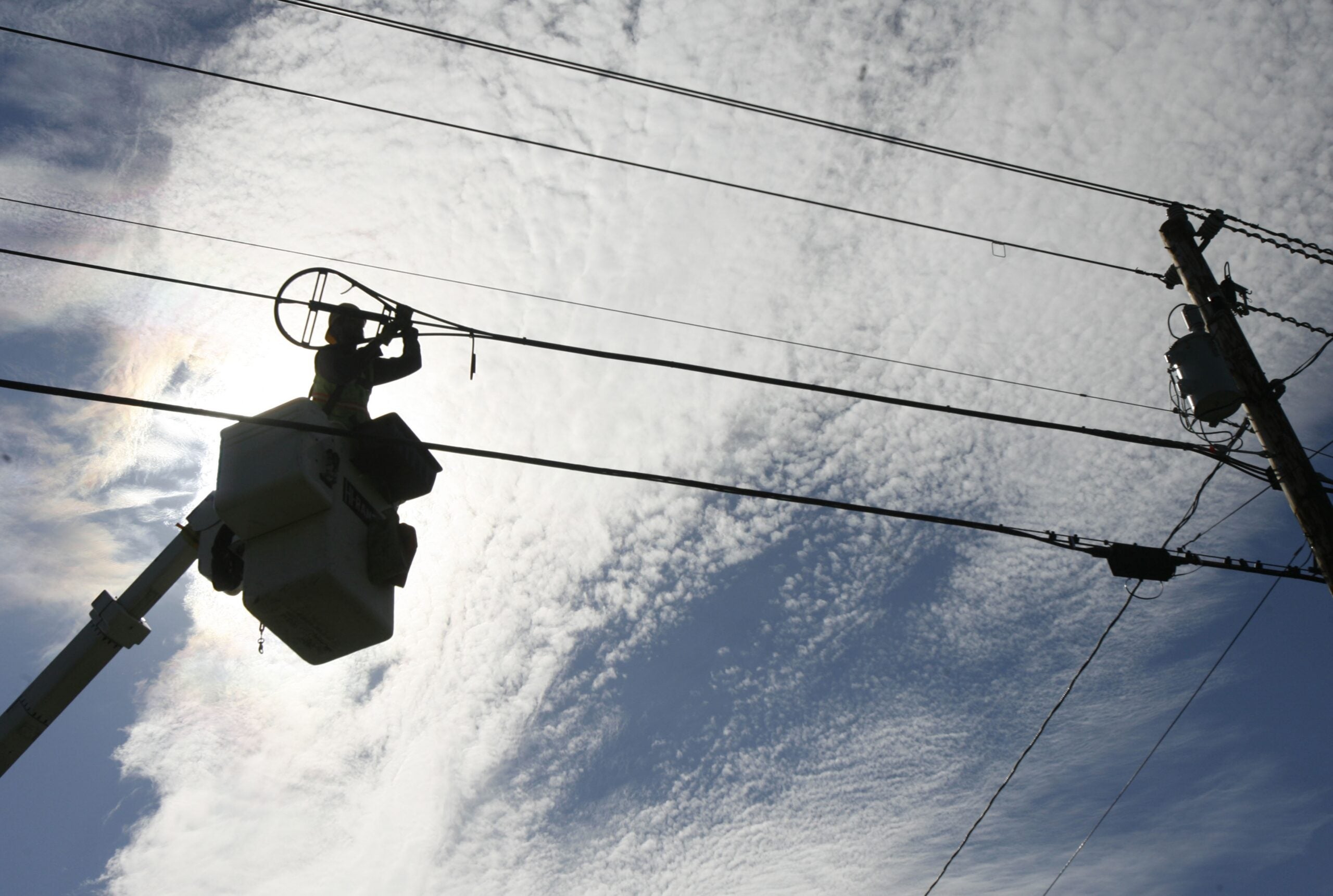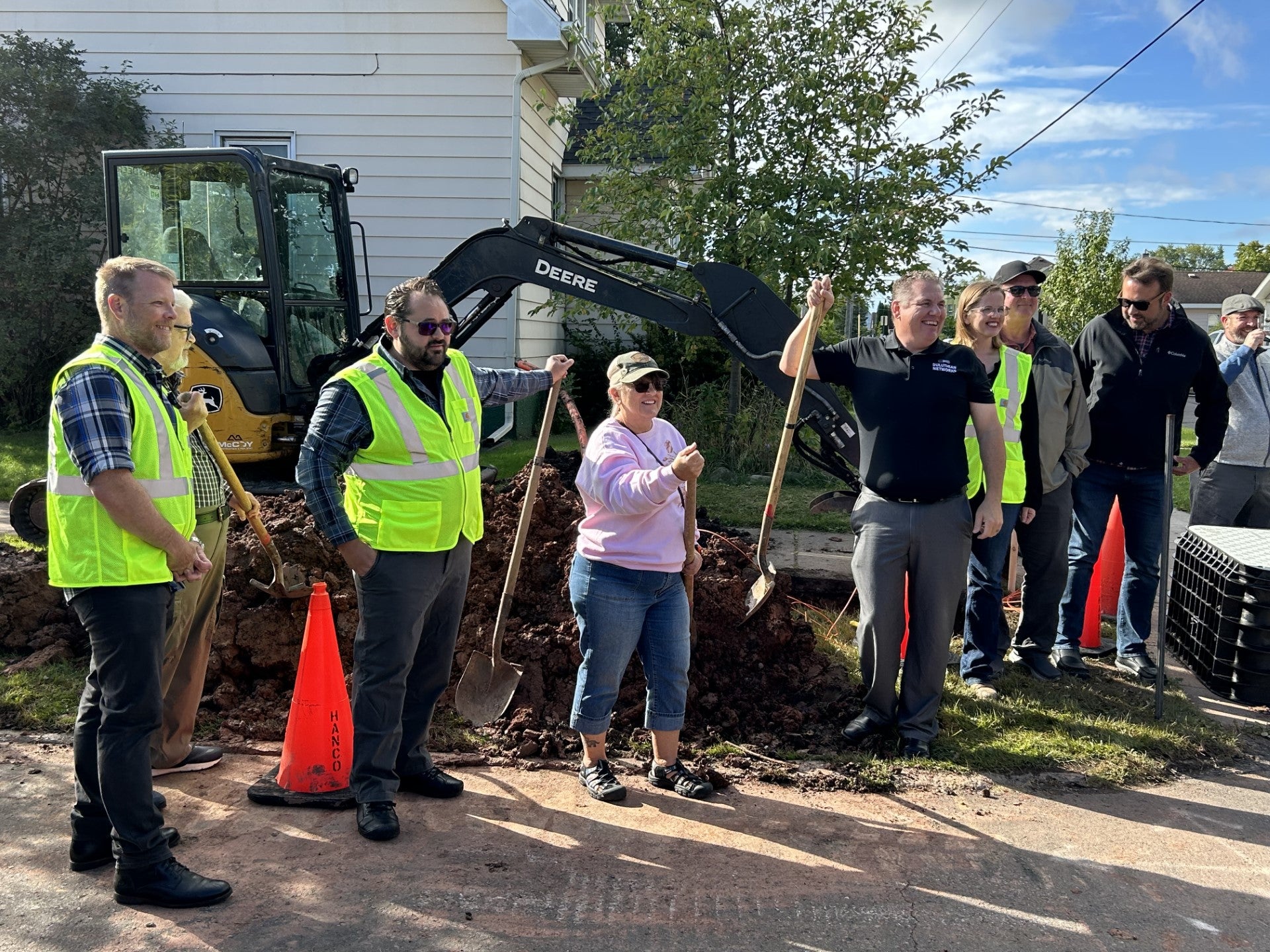In his State of the State address last week, Gov. Tony Evers announced a plan to invest nearly $200 million over the next biennium to expand broadband access for Wisconsin.
In the speech, Evers said the coronavirus pandemic has “exacerbated” the unequal access to high-speed internet in Wisconsin.
“This pandemic has underscored, and in some ways exacerbated, the digital divide that exists across our state,” said Evers. “This pandemic has shown firsthand that lack of access to high-speed internet continues to be a setback for kids, families and businesses across our state.”
News with a little more humanity
WPR’s “Wisconsin Today” newsletter keeps you connected to the state you love without feeling overwhelmed. No paywall. No agenda. No corporate filter.
During the pandemic, people have had to rely on internet to work, go to school, order groceries, access basic health information and services, and run businesses — all from the physically distanced setting of their homes. But in underserved, often rural areas of the state, Evers said, slow internet speeds and unsteady connections have made it much more difficult to do those things.
And that’s made weathering the pandemic even worse.
The last biennial budget included $54 million for broadband, and Evers claims the $200 million investment is five times the amount invested in the three previous budgets. Currently, the state has $24 million to award in the 2021 fiscal year for the broadband expansion grant program, according to the Public Service Commission of Wisconsin (PSC). However, supply can’t keep up with demand, as the broadband office sees requests that total more than double the funding available. Applicants often bring their projects to the PSC in phases to help make those projects more manageable in terms of funding assistance.
A recent report from the research firm Forward Analytics looked at 2019 data from the Federal Communications Commission (FCC), to get more of a picture of the gaps in service in Wisconsin. Here are a few of the findings:
- More than 430,000 people in rural areas of Wisconsin lack access to high-speed internet. That’s about 25 percent of the state’s rural population.
- Less than half of the residents of nine counties in Wisconsin had access to high-speed internet. Some of those included Ashland, Clark and Douglas counties.
- Wisconsin ranks 36th nationwide in accessibility for rural areas.
- 93.6 percent of rural Wisconsin residents have internet speeds of 10 megabits per second (Mbps) or higher, which is better than the national average.
Ahead of the November 2020 election, Dan Hudzinski from the La Crosse area wrote to WPR’s WHYsconsin. He was looking at the state races, and asked: “Candidates have been talking about how they have worked to increase broadband access in the state. Where are we seeing results?”
In a conversation with WPR, Hudzinski elaborated on his question, saying he’d like to know if there is any notable rural broadband expansion in Wisconsin. And, if so, whether it’s driven by municipalities creating their own broadband co-ops instead of relying on private companies to move into the area. He also wanted to know what the state’s role is in all this.
WPR “Central Time” host Rob Ferrett spoke to Jaron McCallum, state broadband director for the PSC, and Theron Rutyna, IT director for the Red Cliff Band of Lake Superior Chippewa Indians and a member of the governor’s task force on broadband access.
According to the PSC, the Red Cliff Band was awarded more than $330,000 in state broadband expansion grants for fiscal years 2018 and 2020. These projects serve hundreds people and include recently installing wireless service and establishing a fiber route between the city of Bayfield and Red Cliff. Rutyna said the connection to Bayfield is complete, and the wireless project is ongoing, as they work to erase gaps in internet service.
This interview has been edited for brevity and clarity.
Rob Ferrett: Jaron, I’ll start with you. How does the state’s broadband office, the Public Service Commission, fit into this effort to provide internet access, high-speed internet access, around the state?
Jaron McCallum: Broadband expansion grants from the state level are certainly a key component to helping to reach those harder and more challenging to serve areas of the state. But also, I think the broadband office serves as a central hub for broadband-related activities, bringing the right people to the room, bringing stakeholders together, because this is a challenging issue and it requires kind of an all-hands-on-deck approach.
RF: What do you see as some of the key challenges generally when it comes to expanding access?
JM: Some of the key challenges are related to population density, the fact that return on investment isn’t there in certain areas of the state. Those are areas of the state that are considered hardest to serve, are most challenging to serve. Terrain can be an issue as well as funding. I think the matter is is that broadband expansion is an expensive and timely process. So funding is a key component as well.
RF: Now, Theron, you’re wearing a couple different hats on this. I want to start by asking you for your perspective on internet access and challenges for the Red Cliff Band that you’re working with.
Theron Rutyna: The Red Cliff Band is a very rural tribe in the northernmost part of Wisconsin, so we take many of the problems that Jaron has and multiply them: money; access; time; rural area as well as our terrain is very difficult.
Mostly what Red Cliff has been dealing with is trying to secure enough money and enough partners between the PSC and private partnerships to be able to make broadband come up to the reservation. The PSC and the state have done a very impressive job in making this available to the tribes. Red Cliff tribe has two PSC grants currently: one to distribute wireless to its membership and another to bring true high-speed broadband fiber to the reservation through (internet, phone and TV provider) Norvado.
RF: And how does this affect the economic well-being of the community not having this access or as you start to get at, you know, the benefits you see from it?
TR: Without broadband access, there is no modern economy. It simply doesn’t exist. So without the membership being able to access the internet, they cannot do e-commerce. They cannot buy things from Amazon. They cannot even connect to government resources in a timely and meaningful manner. Bringing this to the membership, which will hopefully be happening in the early parts of (fiscal year 2021), this will mean that the economic development capacity for the tribe will be significantly increased.
RF: And Theron, you’re also working on the governor’s task force on broadband access. Are you hearing similar stories — maybe different from local perspectives, but similar stories from communities around the state?
TR: With the governor’s task force, we are hearing exactly the same thing from all the rural areas. The tribes themselves are amplified in a way because of our unique problems. But each of the rural municipalities has the same issue: there’s electricity to everywhere, but there isn’t broadband to everywhere.
RF: Jaron, can things like, ‘OK, I’ll boost my phone signal or go to satellite,’ are those going to do the job that we’re hoping to see from something like actual wired broadband?
JM: I think broadband really shouldn’t be thought of as a luxury anymore. It’s really a critical need for Wisconsinites. I think, you know, the broadband office wants to invest in a forward-looking, future-proof technology. So things like that are great for securing the future of our Wisconsinites and really helping them with the modern economy.
RF: Theron, does it make it harder to pick a community as a way of life without that broadband access, at least for many people these days?
TR: For many people, it is nearly impossible to live somewhere without broadband access. Without broadband, you can’t work. And for the tribe, it becomes an additional difficulty when tribal members want to return to the reservation later in life or perhaps to actually have their families and to settle down.
The trunk lines that Norvado has been putting in have brought a lifeline of broadband to these municipalities. The difficulty then becomes that the municipalities and tribes have to be able to spread that broadband out to the people who live there, or to the membership of the tribe. And that becomes a significant difficulty.
RF: And Theron, what are you hoping to see come out of the state budget?
TR: I’m hoping to see an increase in funding from the state toward all municipalities, tribes in rural as well as suburban areas. I would like to see, where the roads go, the fiber must go. If we can reach that, Wisconsin will reach all of our digital divides.
RF: And, Jaron, what’s at the top of mind for you right now when it comes to expanding broadband?
JM: Continuing to leverage our broadband expansion grant program, continuing to leverage our strategic partnerships across the state. We know that this is a critical issue that needs to be met head on, continuing to look at things like broadband mapping and broadband mapping accuracy. I think that remains a key part of this equation, having accurate broadband maps. And also helping to address local planning efforts. We had an exciting partnership with Wisconsin Economic Development Corp., our Broadband Connectors Pilot Program, and that was a successful pilot program to really address those local planning needs where we saw there’s a significant gap.
This story came from an audience question as part of the WHYsconsin project. Submit your question at wpr.org/WHYsconsin and we might answer it in a future story.




